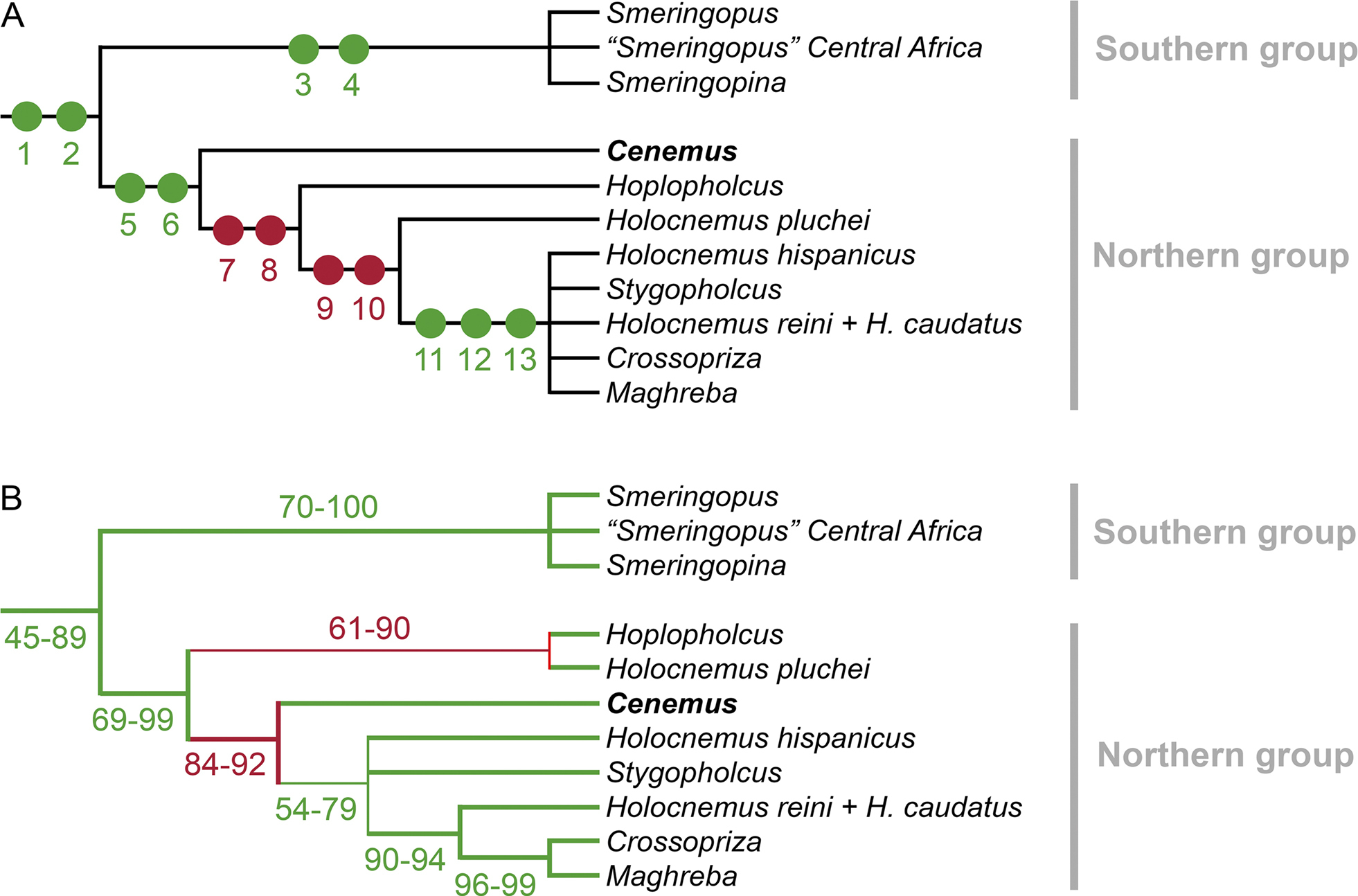
|
||
|
Overview of putative Smeringopinae relationships, showing the main conflicts (red) between morphological (A) and molecular (B) evidence. A Morphological and karyological support for each node, mapped on a hybrid tree derived from cladistic analysis (Huber 2022) and manual placement of Cenemus; character information from Ávila-Herrera et al. (2021), Dederichs et al. (2022); Huber (2012, 2013, 2020, 2022), Huber et al. (2021), and present paper. Characters: 1, large and deep thoracic pit; 2, sperm with microtubules in implantation fossa; 3, reduction of cheliceral stridulation; 4, reduction of epiandrous spigots from four to two; 5, tendency of increase of epiandrous spigots to more than four; 6, reduction of ALS spigots to two on each side; 7, reduction of lateral carapace marks; 8, spines on male anterior legs; 9, spots on legs; 10, change from X1X20 to X0 karyotype system; 11, reduction of 13 to 11 chromosome pairs; 12, nucleolus organizer region at end of single X chromosome; 13, abdomen posteriorly dorsally angular to pointed. B Molecular support (UFBoot in %) for individual nodes, taken from the 16 trees without obvious misplacements (Pholcinae monophyletic; Smeringopinae monophyletic; Holocnemus pluchei in northern group; all Smeringopus in southern group). Thick lines: mostly high (>80) support; thin lines: mostly low (<80) support. Nodes with low support are collapsed unless supported by morphology. |